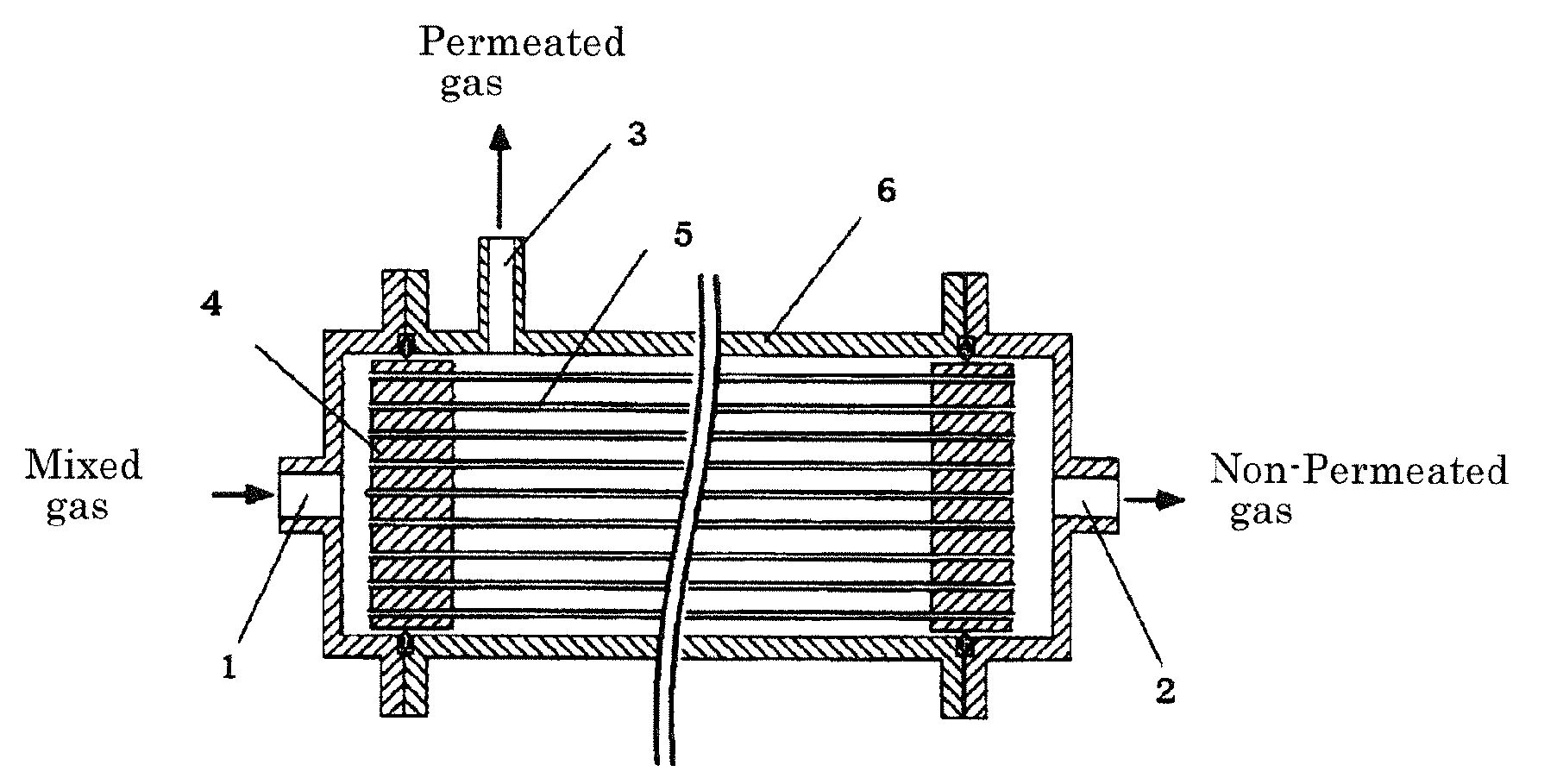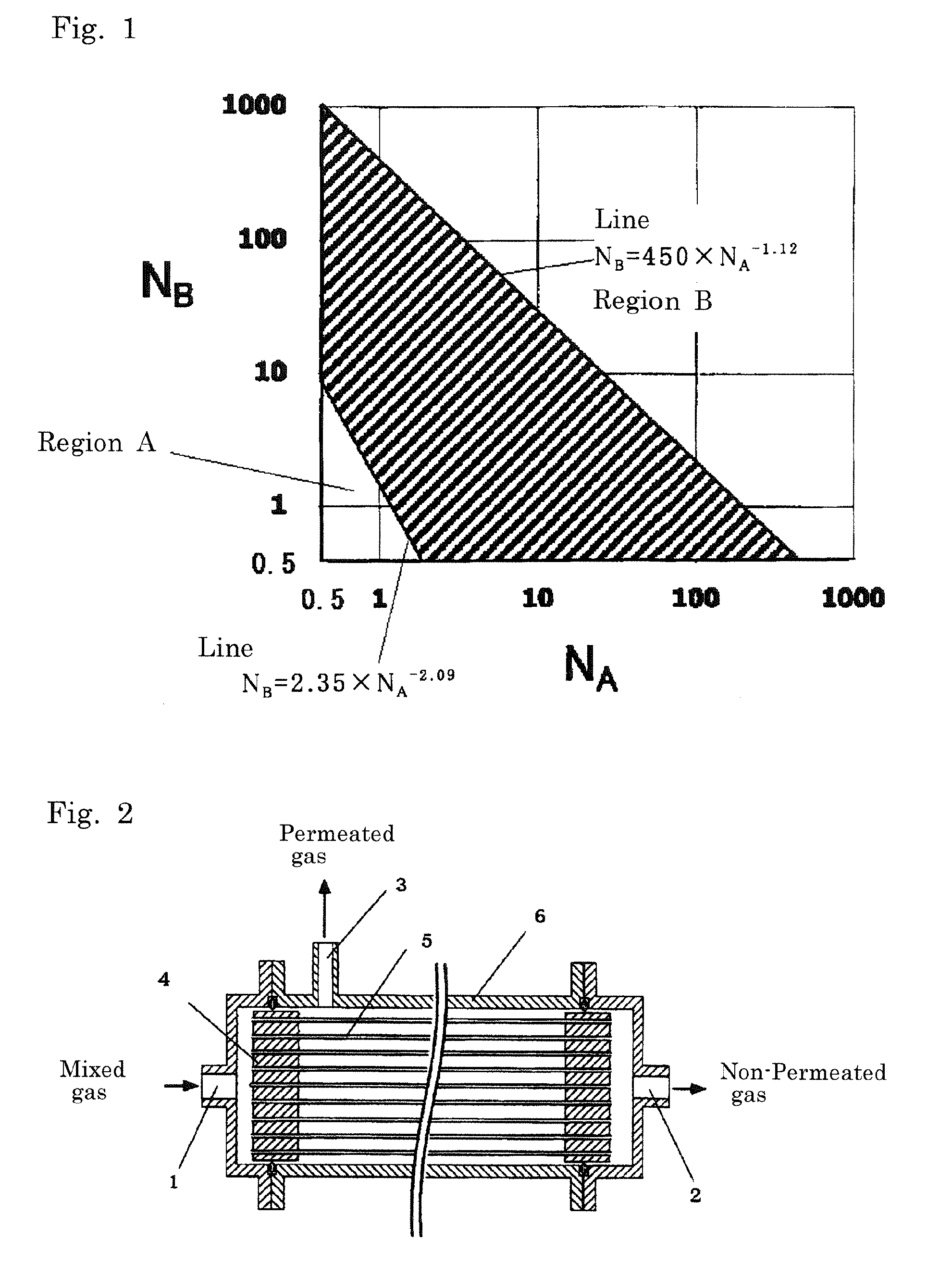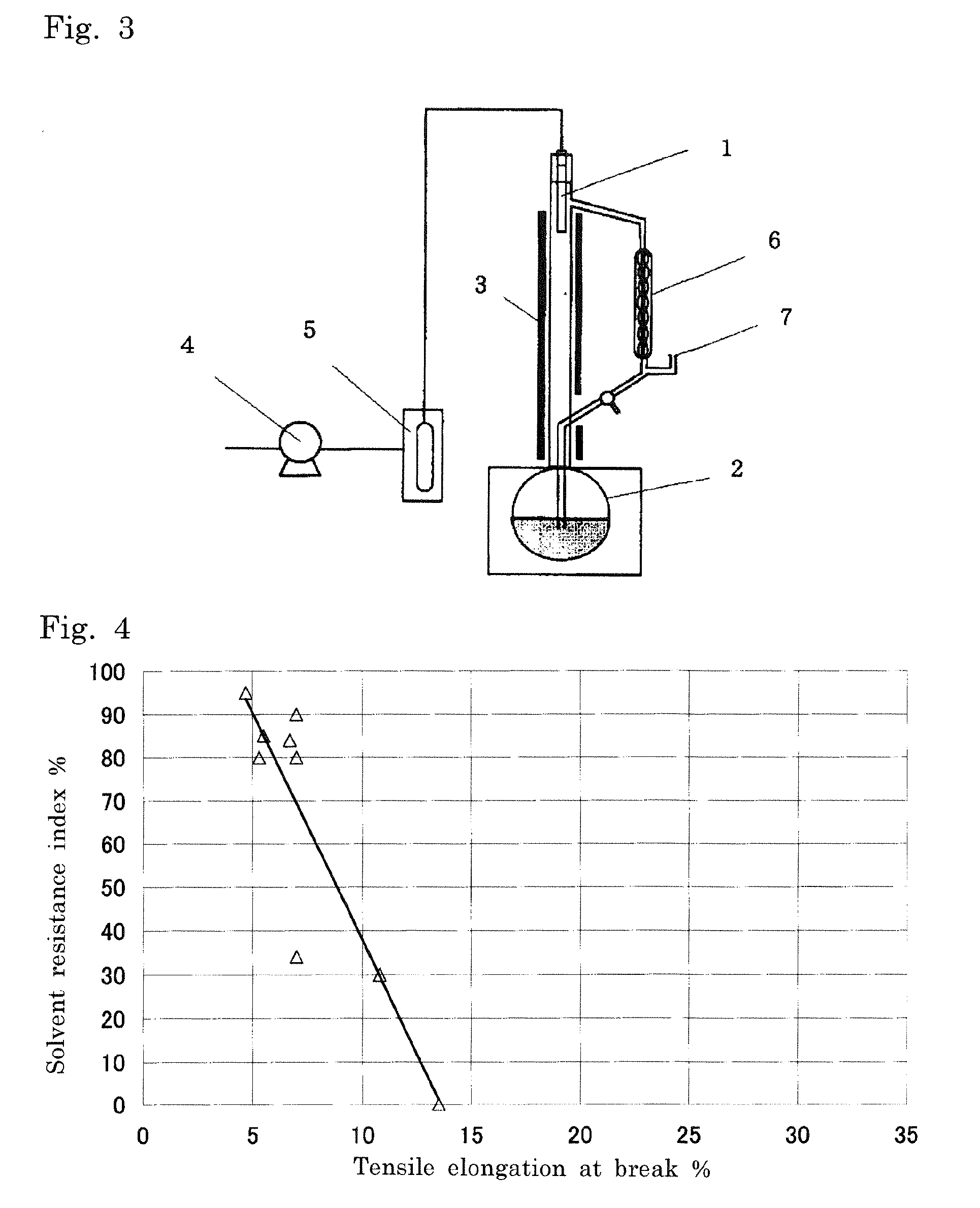Solvent-resistant asymmetric hollow fiber gas separation membrane, and method for production thereof
a technology of gas separation membrane and hollow fiber, which is applied in the direction of separation process, fibre chemical features, textiles and paper, etc., can solve the problems of mechanical strength deterioration and solvent resistance of the separation membrane described in these references, and achieve excellent mechanical strength and ductility, and excellent ability of selective permeation of organic vapor
- Summary
- Abstract
- Description
- Claims
- Application Information
AI Technical Summary
Benefits of technology
Problems solved by technology
Method used
Image
Examples
example 1
[0177]In a separable flask, 11.02 g of 6FDA, 5.47 g of s-BPDA, 6.07 g of TSN and 7.13 g of TCB were polymerized together with 137 g of PCP serving as a solvent at a reaction temperature of 190° C. for 20 hours to obtain a polyimide solution. The degree of polymerization of the polyimide in this solution was 21 (i.e., NA=21). To this polyimide solution, 2.74 g of s-BPDA, 2.03 g of PMDA, 2.60 g of TSN and 3.05 g of TCB were added together with 48 g of PCP serving as a solvent (i.e., NB=0.5). This multicomponent polyimide mixed solution was further polymerized and imidized at a reaction temperature of 190° C. for 32 hours to obtain a polyimide solution, in which a degree of polymerization of polyimide was 27, a rotational viscosity was 1,469 poises and a polymer concentration was 17% by weight (diamine was 1.020 parts by mol with respect to 1 part by mol of acid dianhydride as the total starting material composition).
[0178]By using this multicomponent polyimide mixed solution, the asym...
example 2
[0183]The asymmetric membrane (1) obtained in Example 1 was subjected to the heat treatment at 400° C. for one hour, and the properties of the resultant asymmetric hollow fiber gas separation membrane were measured in accordance with the above-mentioned method.
[0184]The oxygen gas permeance of this hollow fiber membrane was 1.01×10−5 cm3(STP) / cm2·sec·cmHg, the nitrogen gas permeance was 1.99×10−6 cm3(STP) / cm2·sec·cmHg, and the ratio of permeance of oxygen gas to nitrogen gas was 5.1. The MeOH gas permeance of this hollow fiber membrane was 16.9×10−5 cm3(STP) / cm2·sec·cmHg, the DMC gas permeance was 1.9×10−5 cm3(STP) / cm2·sec·cmHg, and the ratio of permeance of MeOH gas to DMC gas was 8.9. The carbon dioxide gas permeance of this hollow fiber membrane was 4.6×10−5 cm3(STP) / cm2·sec·cmHg, the methane gas permeance was 1.4×10−6 cm3(STP) / cm2·sec·cmHg, and the SF6 gas permeance was 5.6×10−9 cm3(STP) / cm2·sec·cmHg. In addition, the tensile fracture strength was 13.0 kgf / mm2, the tensile elong...
example 3
[0203]In a separable flask, 6.36 g of s-BPDA and 6.07 g of TSN were polymerized and imidized together with 171 g of PCP serving as a solvent at a reaction temperature of 190° C. for 27 hours to obtain a solution. The degree of polymerization of the polyimide in this polyimide solution was 57 (i.e., NA=57). To this polyimide solution, 6.36 g of s-BPDA, 12.79 g of 6FDA, 8.10 g of TSN, 3.67 g of MASN and 1.12 g of DABA were added together with 20 g of PCP serving as a solvent (i.e., NA=0.5). This multicomponent polyimide mixed solution was further polymerized and imidized at a reaction temperature of 190° C. for 19 hours to obtain a multicomponent polyimide mixed solution, in which a degree of polymerization of polyimide was 50, a rotational viscosity was 1,507 poises and a polymer concentration was 18% by weight (diamine was 1.025 parts by mol with respect to 1 part by mol of acid dianhydride as the total starting material composition).
[0204]By using this multicomponent polyimide mixe...
PUM
| Property | Measurement | Unit |
|---|---|---|
| Temperature | aaaaa | aaaaa |
| Temperature | aaaaa | aaaaa |
| Temperature | aaaaa | aaaaa |
Abstract
Description
Claims
Application Information
 Login to View More
Login to View More - R&D
- Intellectual Property
- Life Sciences
- Materials
- Tech Scout
- Unparalleled Data Quality
- Higher Quality Content
- 60% Fewer Hallucinations
Browse by: Latest US Patents, China's latest patents, Technical Efficacy Thesaurus, Application Domain, Technology Topic, Popular Technical Reports.
© 2025 PatSnap. All rights reserved.Legal|Privacy policy|Modern Slavery Act Transparency Statement|Sitemap|About US| Contact US: help@patsnap.com



